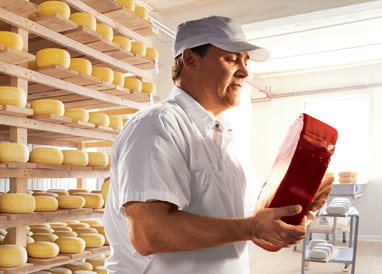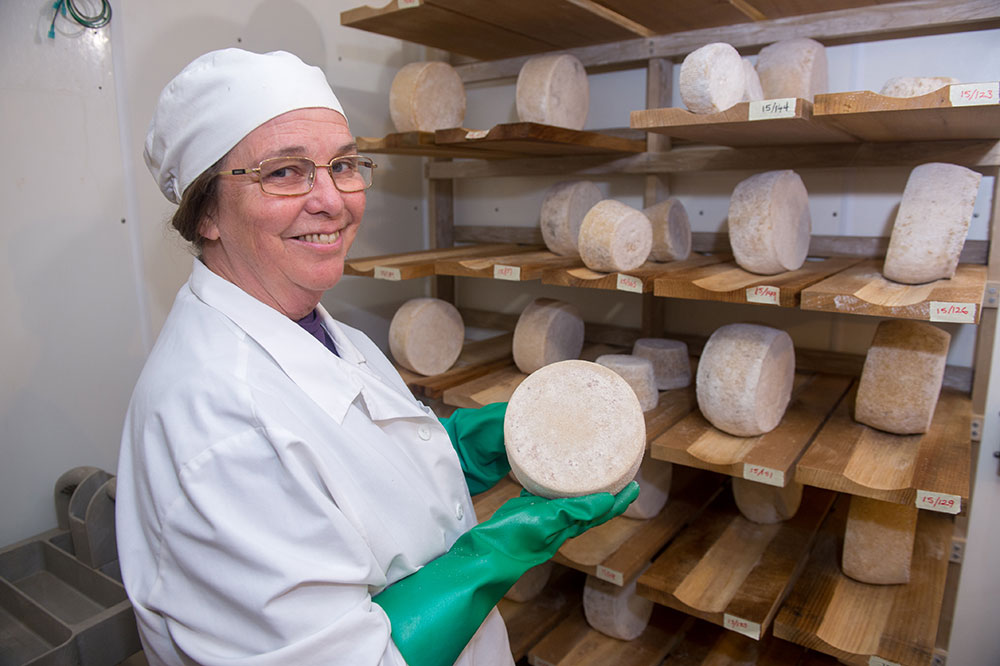Discover the Art of Floridia Cheese: An Overview to Cheese Makers Melbourne
Discover the Art of Floridia Cheese: An Overview to Cheese Makers Melbourne
Blog Article
Opening the Secrets of Artisanal Cheese Making: A Step-by-Step DIY Overview
In the realm of cooking craftsmanship, artisanal cheese making stands as a testimony to the delicate equilibrium between custom and development. Each step in the procedure, from picking the ideal milk to improving aging techniques, holds within it a wide range of understanding passed down with generations. As we start this journey to demystify the art of producing exquisite cheeses, we are encountered with a tapestry of tricks and skills waiting to be deciphered. Join us as we explore the complexities of this ancient craft, where art, scientific research, and persistence merge to produce flavors that tantalize the senses.
Choosing the Right Milk
When beginning on the journey of artisanal cheese production, the option of milk plays an important role in figuring out the high quality and qualities of the end product. The type of milk picked impacts the taste, texture, and on the whole profile of the cheese. Raw milk, straight from the pet, is chosen by lots of artisanal cheesemakers as a result of its special mix of enzymes, bacteria, and taste compounds. Using raw milk comes with policies and risks, making pasteurized milk a safer option for newbies.
When selecting milk for cheese production, it is very important to take into consideration the fat web content. Greater fat material in milk can lead to a creamier and richer cheese, while reduced fat content may result in a drier and stronger texture. Additionally, the source of the milk, whether from cows, goats, lamb, or buffalo, adds distinctive flavors and attributes to the cheese (Floridia Cheese Thomastown). Each sort of milk brings its own subtleties, permitting a wide variety of cheese selections to be crafted based on the picked milk. Eventually, the selection of milk is an essential choice that sets the foundation for a successful artisanal cheese-making undertaking.
Culturing and Coagulating
To initiate the cheese-making process, the essential actions of culturing and coagulating should be meticulously performed to change milk right into curds and whey. Culturing entails introducing valuable bacteria to the milk, which then starts the fermentation procedure. These bacteria transform lactose (milk sugar) right into lactic acid, creating the acidic setting needed for coagulation. The sort of society utilized can considerably affect the taste, appearance, and ripening of the last cheese product.

The timing and temperature control throughout culturing and coagulation are essential variables that affect the last outcome of celebrity. Correct implementation of these steps is vital to make sure the wanted texture, taste, and consistency of the artisanal cheese being generated.
Draining and Pushing Curds
After the milk proteins have coagulated and the curds have actually been cut to release whey, the next crucial action in artisanal cheese making entails draining and pressing the curds to accomplish the preferred appearance and consistency of the final cheese item. Draining is the process of separating the curds from the whey. This can be done by moving the curds right into a cheesecloth-lined bowl-shaped sieve or mold and permitting the whey to drain pipes off naturally. The moment for draining pipes can differ depending upon the kind of cheese being made and the desired wetness material.
Pushing helps eliminate any continuing to be whey and compacts the curds to create a solid cheese find here wheel. Appropriate draining and pressing are important actions that significantly influence the top quality and features of the artisanal cheese being produced.
Aging and Flavor Strategies
Carrying out precise aging and flavor methods is essential in boosting the depth and complexity of artisanal cheeses, raising their preference accounts to exquisite levels of improvement and refinement. Aging plays a vital duty in creating the distinct flavors and textures that differentiate artisanal cheeses.
Flavoring methods likewise add dramatically to the last preference of artisanal cheeses. Cheesemakers might select to introduce extra flavors by incorporating ingredients such as herbs, flavors, and even fruits right into celebrity throughout the production procedure. In addition, some cheeses are washed or scrubed with different liquids, such as brine or alcohol, to boost their flavors and textures.
Covering and Saving Cheeses

Final Thought
In verdict, mastering the art of artisanal cheese making includes thoroughly choosing the right milk, complying with specific culturing and coagulating processes, draining and pressing curds effectively, and using various aging and flavoring strategies. Keep in mind to wrap and keep your cheeses effectively to guarantee ideal taste and appearance growth.
Each type of milk brings its very own nuances, allowing for a broad array of cheese ranges to be crafted based on the picked milk.After the milk healthy proteins have actually coagulated and the curds have been cut to launch whey, the next essential step in artisanal cheese making involves draining pipes and pushing the curds to achieve the wanted texture and consistency of the final cheese item. A lot of cheeses need to be covered in wax paper or cheese paper to enable them to breathe while securing them from drying out. For cheeses that need to continue aging, such as bloomy skins or washed skins, ensure they are saved in a trendy atmosphere like a cheese cavern or a refrigerator set to the ideal temperature. By paying attention to the covering and storage of artisanal cheeses, cheese manufacturers and fanatics can preserve the stability of these specials and completely a fantastic read appreciate their complex flavors.
Report this page